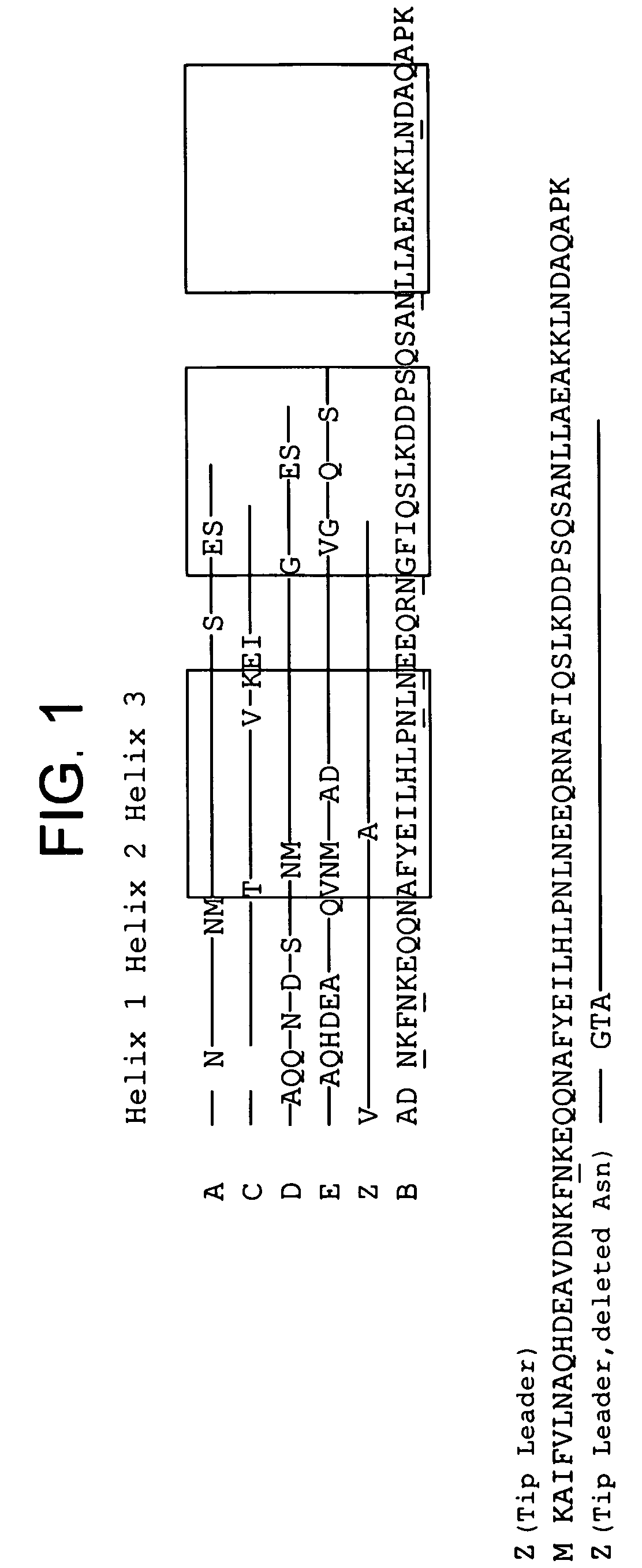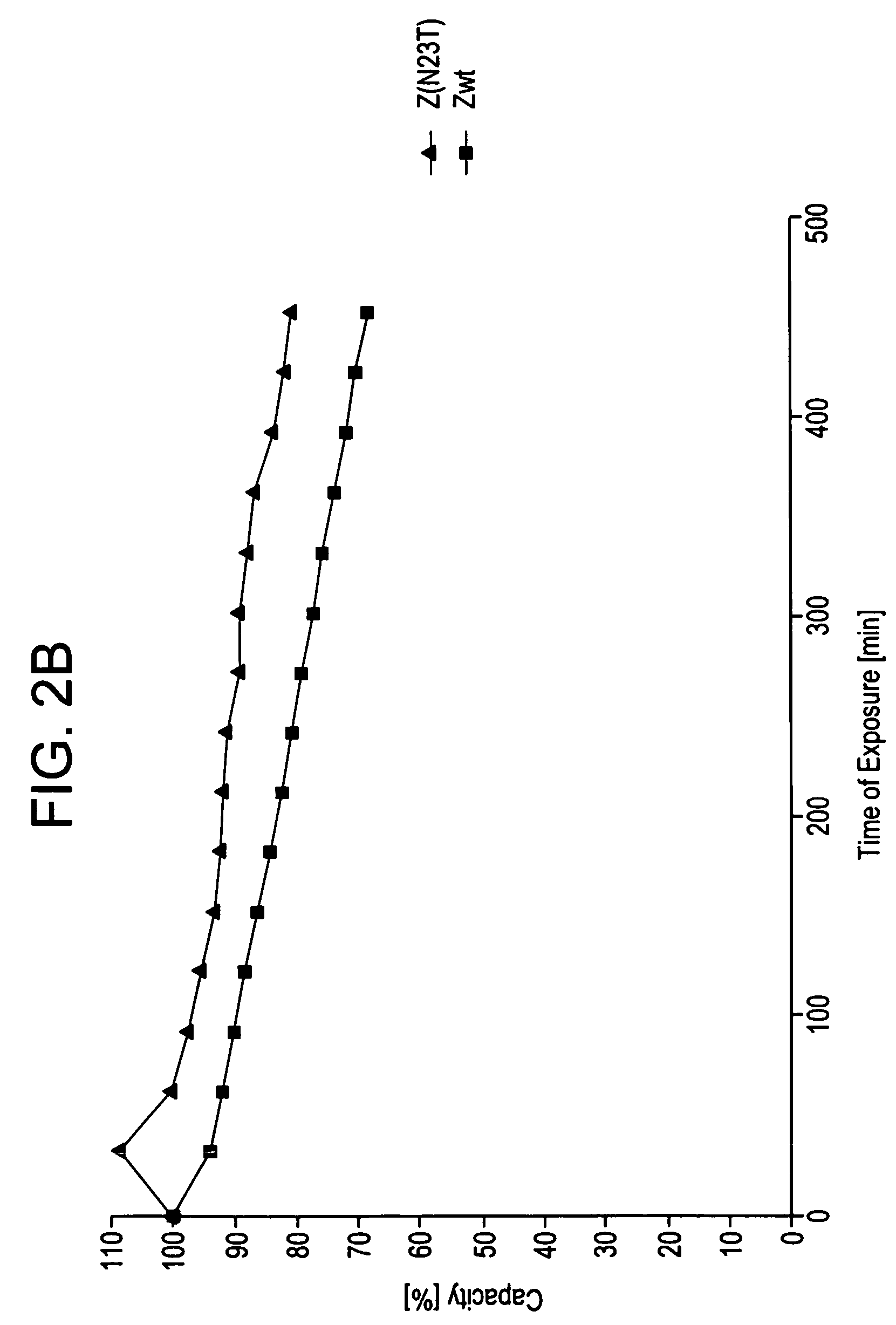Protein ligands
a technology of protein ligands and ligands, applied in the field of protein ligands, can solve the problems of degrading ligands, affecting the stability of sensitive protein-based ligands, and reducing capacities, so as to increase chemical stability and stability. the effect of stability
- Summary
- Abstract
- Description
- Claims
- Application Information
AI Technical Summary
Benefits of technology
Problems solved by technology
Method used
Image
Examples
example 1
Results (Example 1)
[0100]All Z variants were successfully produced intracellular in E. coli at 37° C. and show the same expression levels, approximately 50 mg / l as estimated from SDS-PAGE. The proteins were all purified by IgG affinity chromatography. After the purification, samples were analysed with SDS-PAGE (data not shown), lyophilised and stored for further analyses. The molecular mass for protein Z and the different mutants thereof were also confirmed by mass spectrometry. The data confirmed correct amino acid content for all mutants (data not shown). Also, structural analyses were performed on a Circular Dichroism (CD) equipment, since it previously has been proven to be suitable for detecting structural changes in α-helical proteins (Johnson, C. W., Jr. 1990. Protein secondary structure and circular dichroism: a practical guide. Proteins. 7:205-214; and Nord, K., J. Nilsson, B. Nilsson, M. Uhlén, and P.-Å. Nygren. 1995. A combinatorial library of an α-helical bacterial recep...
example 2
Results (Example 2)
[0102]To determine the differences in affinity for the Z variants towards IgG, surface plasmon resonance (SPR) using a BIACORE™ 2000 instrument was carried out. The aim was to compare the affinity for the different mutated Z variants according to the invention with the parental molecule. As mentioned above, due to the high alkaline stability of the parental Z domain it was decided to use a structurally destabilised variant of Z including the F30A mutation (Cedergren, L., R. Andersson, B. Jansson, M. Uhlén, and B. Nilsson. 1993. Mutational analysis of the interaction between staphylococcal protein A and human IgG1. Protein eng. 6:441-448). Therefore, it was of importance to first confirm that the affinity between the mutated molecule and IgG was retained despite the mutation. As can be seen in table 1 below, the affinity of Z(F30A) is not significantly affected. The very small change in affinity gives a slightly higher stability to the complex of Z(F30A) and IgG co...
example 3
Results (Example 3)
[0105]Z, Z(F30A), and mutants thereof were covalently attached to HITRAP™ columns using NHS-chemistry. IgG in excess was loaded and the amount of eluted IgG was measured after each cycle to determine the total capacity of the column. Between each cycle the columns were exposed to CIP treatment consisting of 0.5 M NaOH. After 16 pulses, giving a total exposure time of 7.5 hours, the column with the Z(F30A)-matrix shows a 70% decrease of the capacity. The degradation data in FIG. 2a suggest that four of the exchanged asparagines (N6, N11, N43 and N52) are less sensitive to the alkaline conditions the mutants are exposed for in this experiment. In contrast, N23 seems to be very important for the stability of Z(F30A). Z(F30A,N23T) shows only a 28% decrease of capacity despite the destabilising F30A-mutation. Hence, the Z(F30A,N23T) is almost as stable as Zwt and thereby the most stabilised variant with Z(F30A) as scaffold. Also the Z(F30A)-domain with two additional m...
PUM
| Property | Measurement | Unit |
|---|---|---|
| pH | aaaaa | aaaaa |
| path length | aaaaa | aaaaa |
| path length | aaaaa | aaaaa |
Abstract
Description
Claims
Application Information
 Login to View More
Login to View More - R&D
- Intellectual Property
- Life Sciences
- Materials
- Tech Scout
- Unparalleled Data Quality
- Higher Quality Content
- 60% Fewer Hallucinations
Browse by: Latest US Patents, China's latest patents, Technical Efficacy Thesaurus, Application Domain, Technology Topic, Popular Technical Reports.
© 2025 PatSnap. All rights reserved.Legal|Privacy policy|Modern Slavery Act Transparency Statement|Sitemap|About US| Contact US: help@patsnap.com



